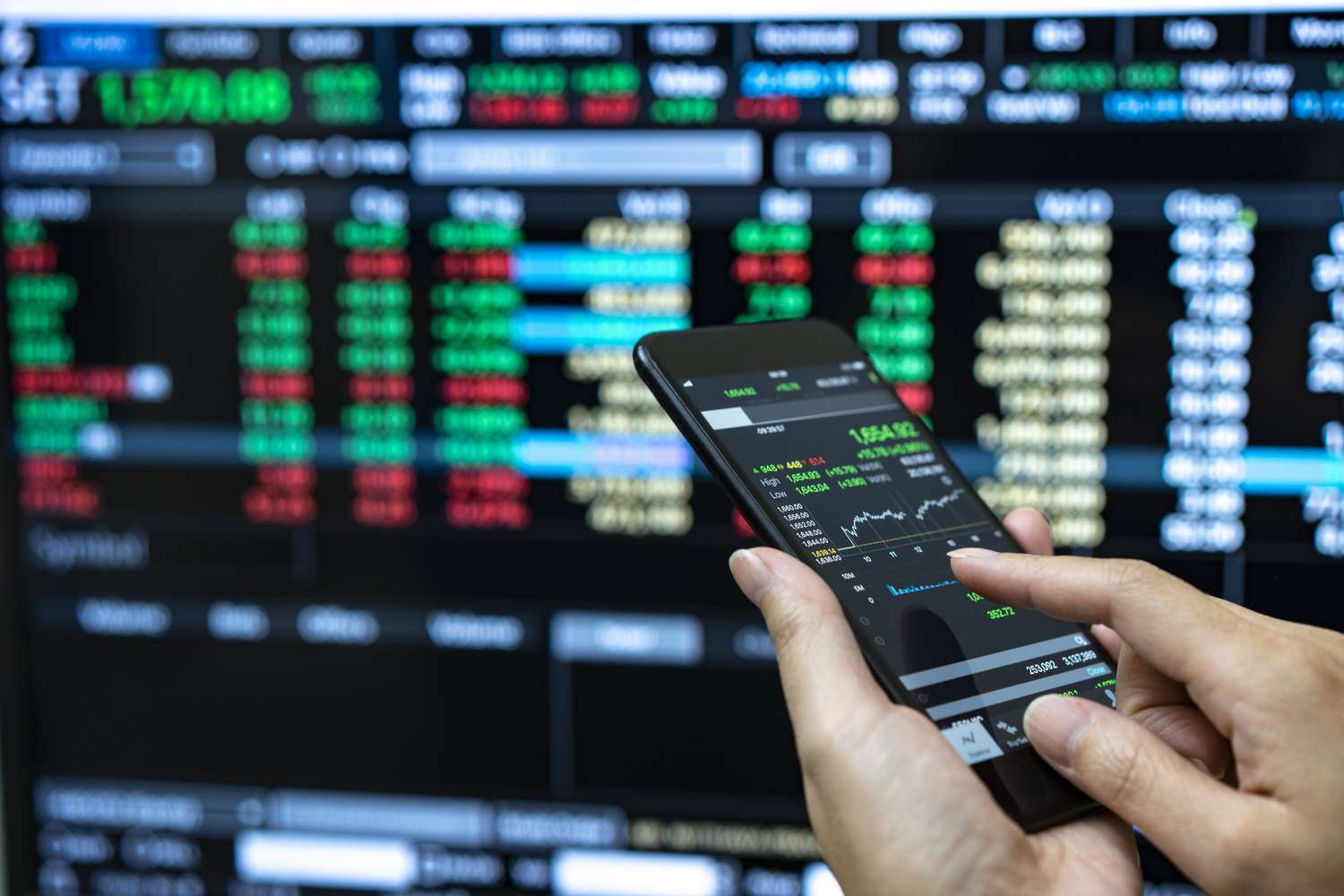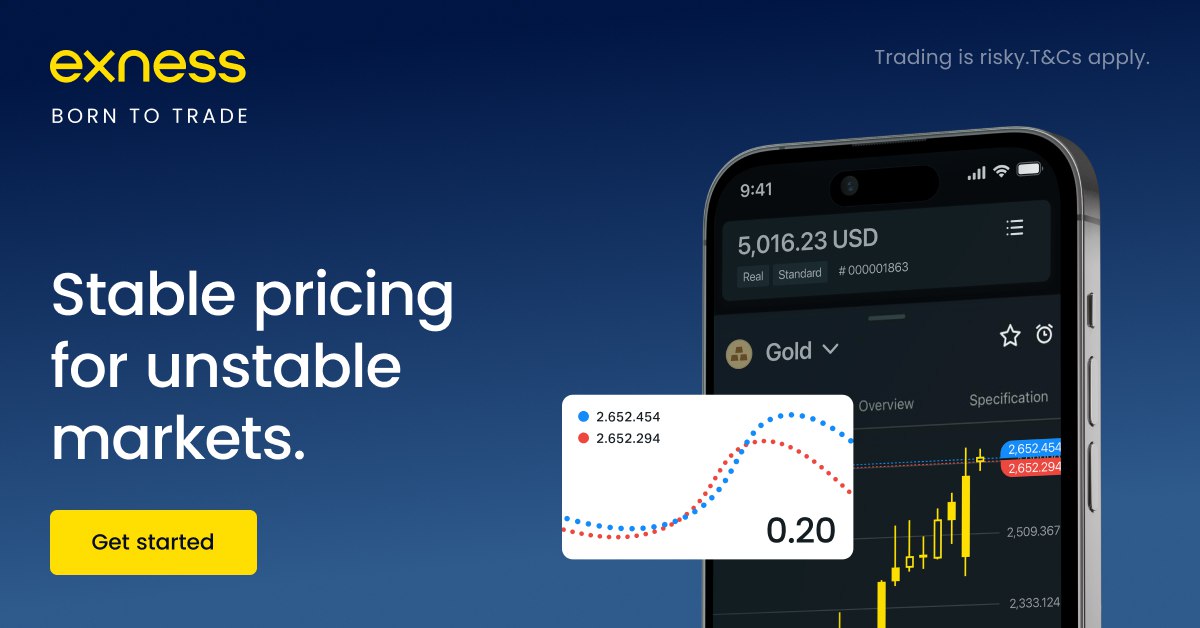
8 minute read
How To make your first Forex trade
Starting your journey in the Forex market can feel overwhelming. With endless charts, unfamiliar terms, and fast-moving markets, it’s easy to feel lost. But making your first Forex trade doesn’t have to be complicated. With the right preparation and guidance, you can start confidently and avoid common beginner mistakes.
This article is your complete guide to making your first Forex trade — safely, smartly, and with a strategy. Whether you're aiming to trade part-time or pursue trading as a profession, understanding the proper steps from the beginning can make all the difference.
Understanding the Basics of Forex Trading
Forex, short for "foreign exchange," is the global marketplace for trading national currencies. It’s the largest financial market in the world, with daily trading volumes surpassing $6 trillion. Unlike the stock market, Forex is open 24 hours a day, five days a week.
Currency trading always happens in pairs. When you see a pair like EUR/USD, you’re essentially buying euros and selling U.S. dollars. The first currency is the “base,” and the second is the “quote.” The value of the pair reflects how much of the quote currency is needed to buy one unit of the base.
Forex attracts many beginners due to its flexibility, low capital requirements, and the potential for high leverage — but it also carries significant risks if not approached properly.
Preparing to Enter the Forex Market
Before placing a trade, it’s critical to shift your mindset from gambling to strategic decision-making. Many beginners enter the market chasing quick profits, but real success in Forex comes from planning, education, and discipline.
One of the first things to understand is leverage. Leverage allows you to control larger trade sizes with a smaller amount of capital. While this can magnify profits, it also increases potential losses. A 1:100 leverage means your $100 can control $10,000 — a powerful tool if used wisely.
Next, choose a trading style that fits your personality and lifestyle. Day trading, swing trading, and position trading all require different levels of time commitment, risk tolerance, and emotional control.
Choosing a Reliable Forex Broker
1️⃣ Exness: Open Account | Go to Website
2️⃣ JustMarkets: Open Account | Go to Website
3️⃣ XM: Open Account | Go to Website
4️⃣Pepperstone: Go to Website
5️⃣Avatrade: Open Account | Go to Website
Not all brokers are created equal, and choosing the wrong one can cost you time, money, and peace of mind. Look for a regulated Forex broker licensed by authorities like the FCA (UK), ASIC (Australia), or NFA (USA). Regulated brokers are held to strict standards that protect your funds and personal information.
Also, compare spreads, commissions, and the availability of demo accounts. A good broker should offer:
Transparent fee structures
A user-friendly trading platform
Educational resources
Responsive customer support
Starting with a demo account is highly recommended. It lets you practice placing trades with virtual money while getting familiar with the trading platform.

Setting Up a Trading Platform
Once you've chosen your broker, it’s time to install a trading platform. Most brokers support MetaTrader 4 (MT4) or MetaTrader 5 (MT5), the industry-standard platforms for Forex trading.
After installation, log in using your broker credentials. You'll see live charts, a trade panel, and various technical indicators. Spend time exploring the interface, setting up chart layouts, and learning how to:
Select currency pairs
Place market and pending orders
Modify stop-loss and take-profit levels
Getting comfortable with the platform ensures you won't fumble when it's time to place a real trade.
Understanding Currency Pairs and Quotes
Forex pairs are categorized into three types:
Major pairs – the most traded (e.g., EUR/USD, GBP/USD, USD/JPY)
Minor pairs – don’t include USD but involve major currencies (e.g., EUR/GBP)
Exotic pairs – involve emerging market currencies (e.g., USD/TRY)
Each pair displays a bid price (selling) and an ask price (buying). The difference between the two is called the spread, which is a small fee brokers collect on every trade.
Understanding how these prices move is crucial to reading charts and timing your trades effectively.
Analyzing the Market Before Trading
Successful trading starts long before clicking the “Buy” or “Sell” button. It begins with market analysis — studying charts, patterns, and economic news to make informed decisions.
There are two main types of analysis:
Technical analysis, which focuses on price charts, trends, indicators, and support/resistance levels
Fundamental analysis, which examines economic events, interest rates, inflation, and geopolitical developments
Choose the analysis style that resonates most with you — or combine both for stronger decision-making. Always determine your risk-reward ratio and entry/exit points before entering a trade.
Placing Your First Forex Trade (Step-by-Step)
Now that you're ready, here’s how to make your first Forex trade:
Choose a currency pair – Start with something familiar like EUR/USD due to its low spread and high liquidity.
Decide the trade direction – Based on your analysis, decide if you want to buy (go long) or sell (go short).
Select your lot size – Beginners should start with micro lots (0.01) to limit risk.
Set a stop-loss – This automatically closes your trade at a certain loss level to prevent disaster.
Set a take-profit – This automatically secures your profit once the market hits your target.
Click Buy or Sell – Once you're satisfied with your settings, execute the trade.
Monitor the trade – Watch price movements, but avoid overreacting to every tick.

Managing Risk on Your First Trade
Risk management is the lifeline of long-term success in Forex. Even the best strategies will fail without it.
A good rule for beginners is to risk no more than 1–2% of your account per trade. For example, if you have $1,000, your maximum risk per trade should be around $10–$20.
Never trade without a stop-loss. It's your safety net, and using it teaches you discipline. Over time, risk management becomes more important than chasing profits.
Monitoring the Trade and Knowing When to Exit
Once your trade is open, emotions can creep in. You may feel fear, greed, or excitement — all of which can cloud judgment.
Stick to your plan. Don’t exit early out of fear, and don’t move your stop-loss just because the trade is going against you. Monitor your trade calmly and consider journaling your thoughts during the process to review later.
If your take-profit is hit, congratulations — you’ve completed a full trading cycle. If your stop-loss is triggered, learn from it and move on.
Learning From Your First Trade
Win or lose, your first trade is a major milestone. What matters most is what you learn from it.
Record the trade in a journal, including:
Why you entered
What the result was
How you felt during the trade
What you would do differently next time
These small reviews build self-awareness, which is crucial for improving over time.

Common Mistakes Beginners Make
It’s easy to get swept up in the excitement of trading, but beware of these common pitfalls:
Overtrading: Don’t place trades out of boredom or revenge.
Ignoring news events: A major news release can spike volatility.
Trading without a plan: You must know your entry, stop-loss, and take-profit before trading.
Over-leveraging: Using too much leverage is a fast track to blowing your account.
Being aware of these mistakes can save you money and stress.
FAQs About Making Your First Forex Trade
1. Do I need a lot of money to start Forex trading?No. Many brokers allow you to start with as little as $50 or even less. Just start small and focus on learning.
2. Can I practice without using real money?Yes! Most brokers offer demo accounts where you can trade with virtual money.
3. How long should I use a demo account?Use it until you're consistently profitable and confident with your strategy — typically at least a few weeks.
4. Is Forex trading legal in my country?Check with your local regulations. Forex is legal in most countries but some have restrictions.
5. Should I trade major or exotic pairs first?Stick with major pairs at the beginning. They are more liquid, less volatile, and cheaper to trade.
6. Can I trade Forex part-time?Absolutely. Many traders keep a full-time job while trading sessions that suit their schedule.
Conclusion and Next Steps
Congratulations! You now have a solid understanding of how to make your first Forex trade. From choosing the right broker to placing your first order and managing risk — you’ve covered every key step.
Your next move? Open a demo account and start practicing. Build confidence, track your trades, and treat every session as a learning opportunity. When you’re ready, go live with small amounts and keep your risk low.
Remember, every pro trader was once a beginner. And your first trade is not about making money — it’s about laying the foundation for a skill that can last a lifetime.









